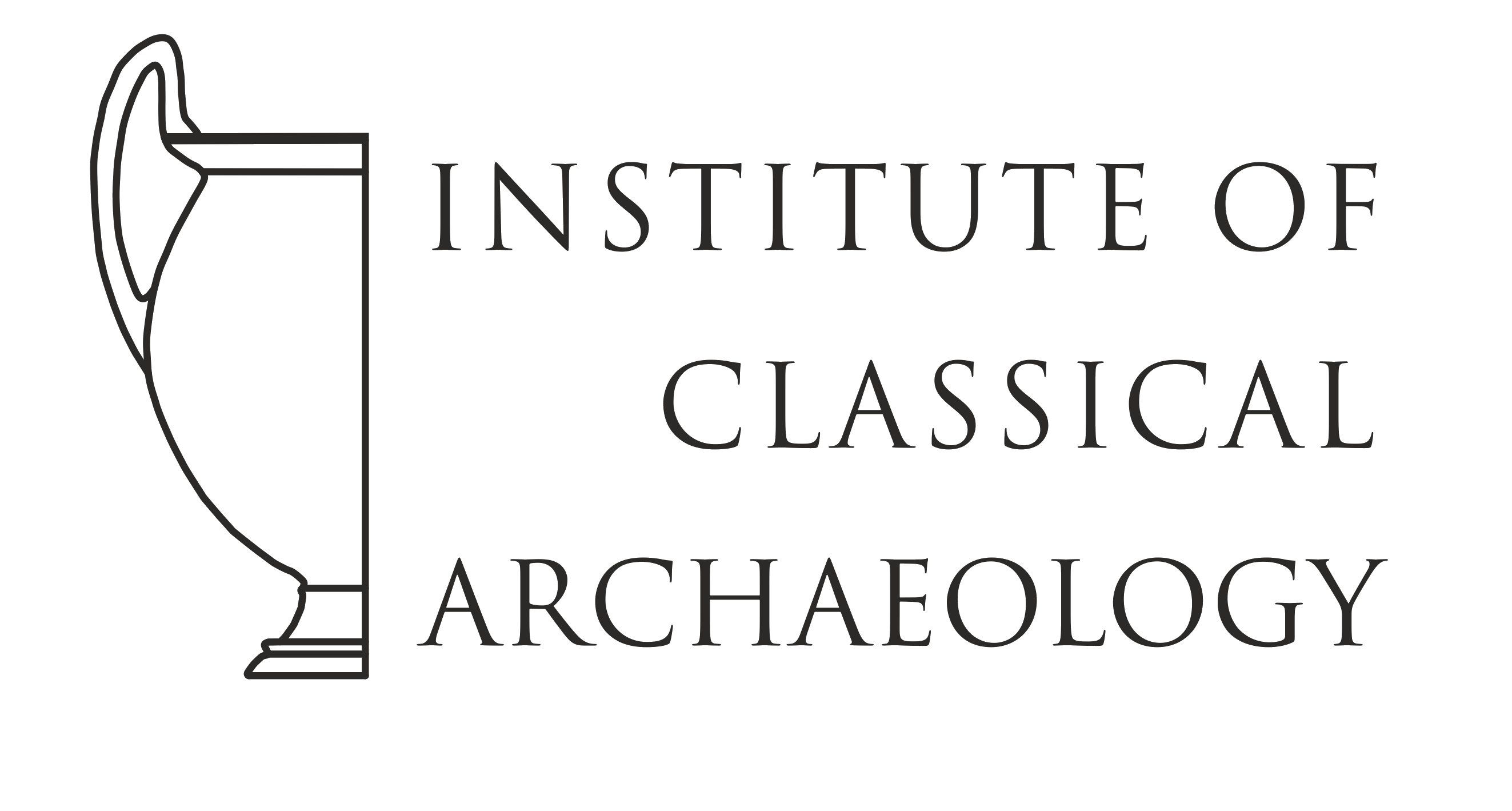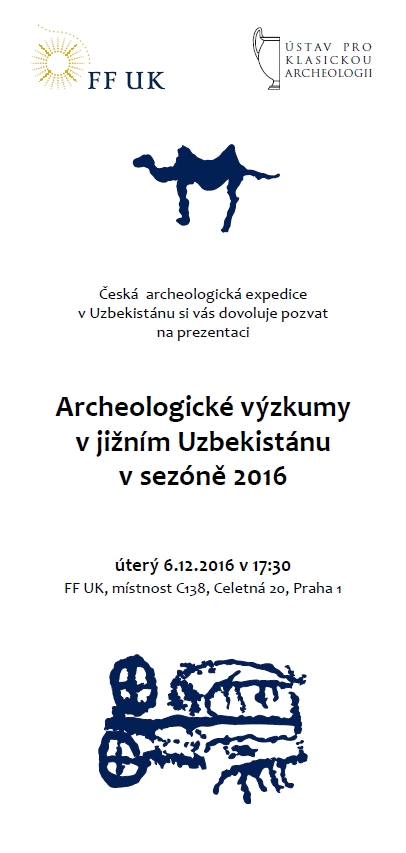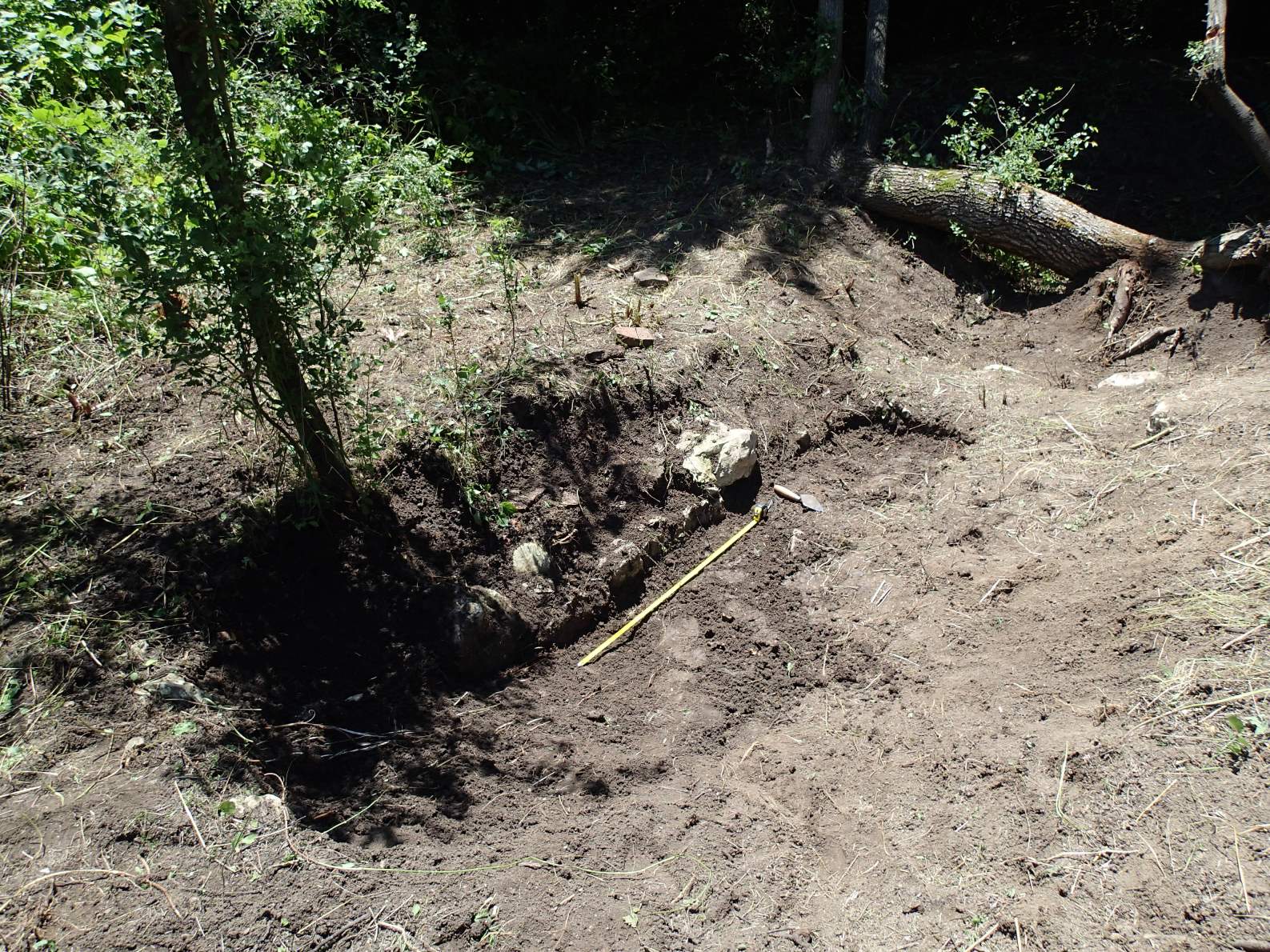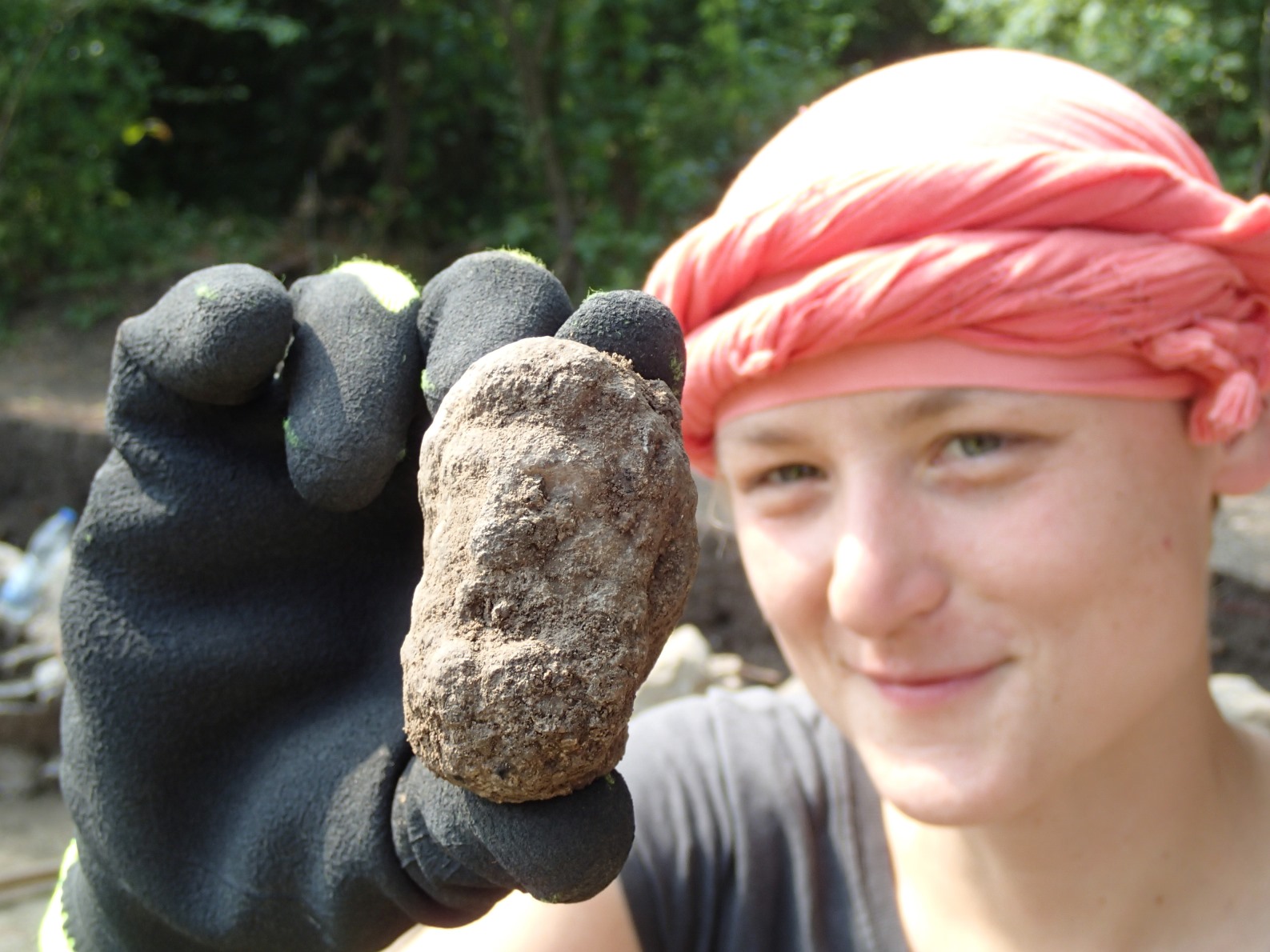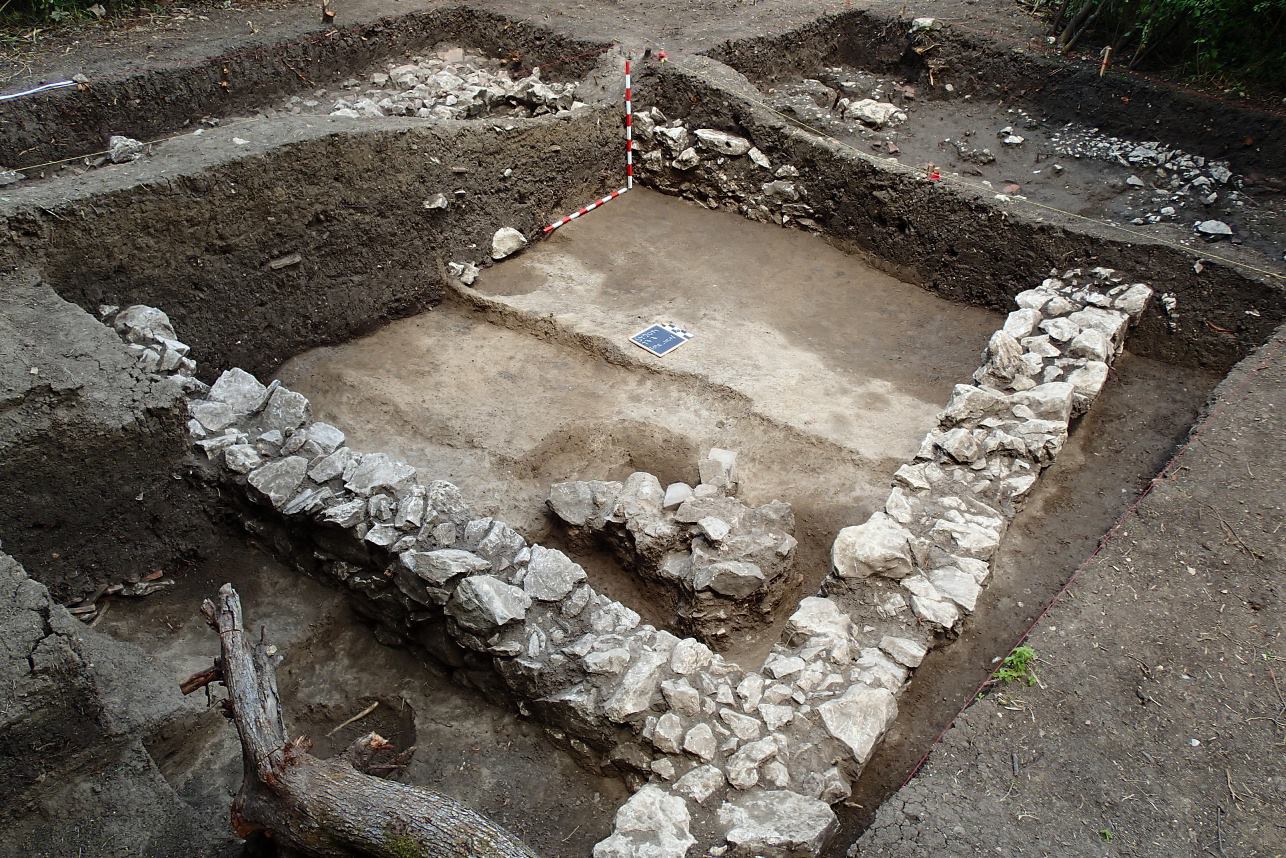NEW - report on 2015 Excavation Season
YURTA – STROYNO
Excavation of Roman Settlement in the Province of Thrace, Bulgaria
Introduction
In 2014 doctoral students of the Charles University started an excavation in cooperation with the Regional History museum in Yambol at a Roman site called Yurta. Yurta is located in the Elhovo district, 1.5 km NE from the village of Stroyno, in the Yambol region. Despite being known for more than a hundred years, the site has never been systematically excavated. In the past, more than 50 finds were randomly discovered in its vicinity. The most spectacular finds include a hoard of 29 silver coins, a fragment of a bronze military diploma of the veteran of Moesian fleet and a marble relief with the depiction of Thracian horseman. All of these finds have been dated to the second half of the 1st through the beginning of the 3rd century AD.
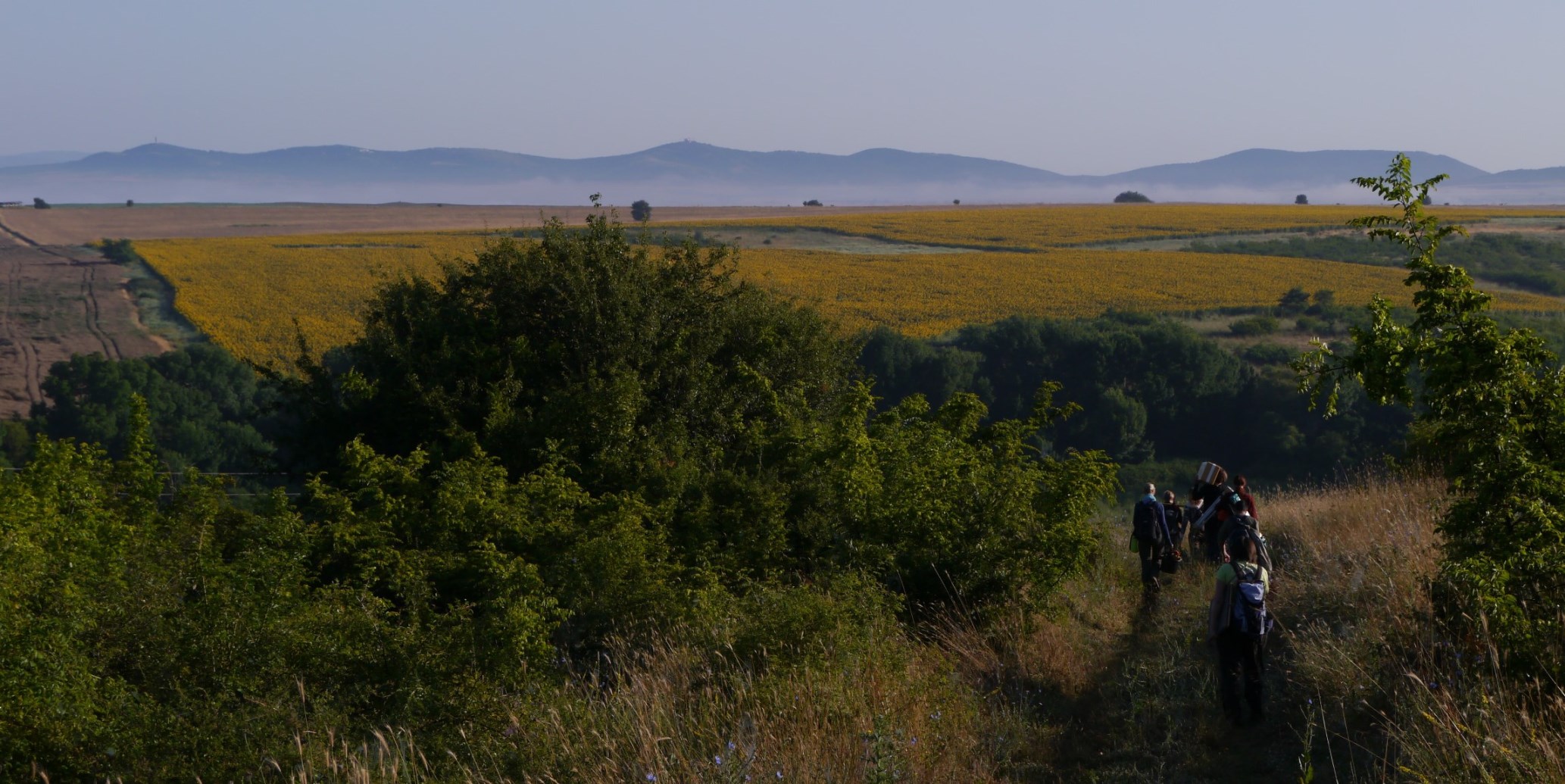
The intrinsic value of the finds and difficult accessibility of the site, placed far from main road and out of sight of residents of the Stroyno village, led to illegal excavations of the settlement by treasure hunters. Their interventions have revealed several stone structures and left accumulations of pottery in their vicinity. The illicit activities aroused the attention of the Regional Historical Museum in Yambol and led to rescue excavations in years 2006 and 2007. Insufficient financial support put a stop to archaeological investigations at the site until the year 2014.
Based on previous finds and investigations, Yurta was identified as a Roman military veteran foundation. Its beginnings are dated into the second half of the 1st century AD while its decline is observed in the 3rd/4th century AD.
The Site
The site at Yurta borders with its southern edge on the Dereorman River, a tributary of the Tundzha River. This edge is covered with dense vegetation, while to the north the site sits on a gently rising slope. Where cultivation is not hindered by the scatter of surface material and robbers’ trenches, the fields are cultivated with annual crops. The extent of the surface pottery scatter at Yurta was documented to span some 31 hectares. The Bakadzhik hill (282.7msl) dominates the hinterland south of the Dereorman River. According to local oral tradition, Roman road once ran at the foot of the Bakadzhik hill in east–west direction. Nowadays a horizontal cut, approximately two metres wide, is visible in the slope of the hill, characterised by random accumulations of stones on its surface. The Deroeroman River leads in the same east–west direction as the potential road. The two eventually reach the main artery of communication in the area – the Tundzha River, running 12km west of the site of Yurta – Stroyno. Along the Tundzha River a bigger scale Roman road was built during the reign of the emperor Trajan. This road led from Kabyle (north of the city of Yambol) through Hadrianopolis (present-day Edirne in Turkey) to the northern shore of the Aegean Sea at Aenos (present-day Enez in Turkey). The Tundzha River, as well as the road of Kabyle-Hadrianopolis-Aenos, enabled active exchange with the North Aegean, which is evidenced by abundant finds of transport amphorae of East-Aegean production found at Yurta.
Excavation Season of 2014
We opened the first trench of excavation above one of the structures previously uncovered by looters; other trenches were placed directly next to the first one. Over the course of the season we opened a total seven trenches, 5m x 5m each, although some of them were excavated only partially. During the excavation we uncovered a structure composed of four rooms in average dimensions 4.90m x 4.70m. Its foundations, built from locally quarried stone without any bonding, are preserved up to 0.80m. The western part of the structure ends in the Dereorman River which most probably destroyed part of the settlement. The eastern part of the structure continues to yet unexplored area. Approximately 2.50m north of the structure a pavement, supposedly part of a street, was found.
Pottery was the most numerous category of artefacts recovered during the excavation. The most abundant types included red slipped ware, kitchen ware and transport amphorae. Handmade pottery was represented by smaller quantities, tying up to the pre-Roman Thracian tradition by its shapes. Among the finds of terracotta several fragments of lamps were recovered. One of them had a medallion decorated by alternating motive of vine grapes and leaves. The second most abundant category of artefacts was glassware; the most common shapes were unguentaria and goblets, the latter faceted or engraved. Altogether we found six glass beads; four oblong hexagonal and two rounded. Metals are mostly represented by iron nails and hooks, in smaller amounts by bronze wires and plates, or lead fragments. The most interesting metal finds comprise a bronze fibula type Almgren 162 ‘Fibel mit umgeschlagenem Fuss’, a bronze decorative belt fitting and an iron stylus or a silver-plated bronze applique. Worked bone was represented by intact needle and a half of a dice. Three coins were found. Two of them bear the depiction of Augustus; the third one is heavily worn, but most probably belongs to Philip II of Macedon.
The most spectacular find of 2014 has been a 6cm tall marble head of a bearded man with a headband, reminiscent of the image of Asclepius. The head has a small hole in the neck, which either served as a mortise (hole for the tenon) for the body of the statuette, or is a mark of reparation after the head broke of the body.
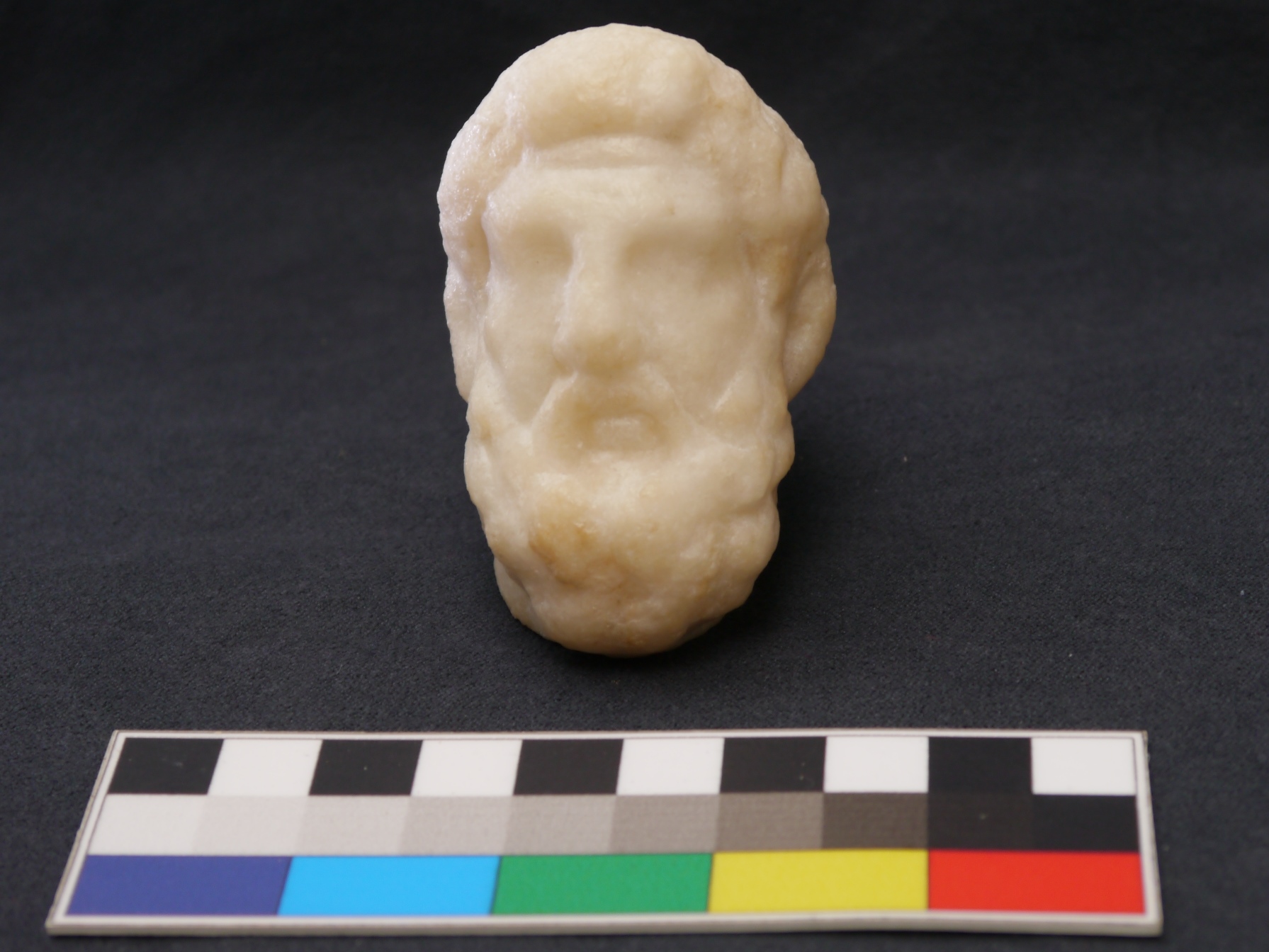
The Season 2015
The Yurta – Stroyno excavation project was supported by the Charles University Grant Agency (GA UK) and by the Internal Grant of the Faculty of Arts at the Charles University in Prague, which together make it possible to extend the excavation for two more years. During the following season we plan to enlarge the area in order to shed light on the shape and function of the uncovered structure and clarify its relation to the pavement.
Authors of the text Petra Tušlová and Barbora Weissová
Photographs by Petra Janouchová, Johana Tlustá, Petra Tušlová and Barbora Weissová
Project participants and their specialization
Stefan Bakardzhiev (director of the Regional Museum in Yambol; the project supervisor)
Tomáš Chlup (ÚKAR)
Viktoria Čisťakova (ÚKAR) – metal and glass
Věra Doležálková (ÚKAR) – total station
Petra Janouchová (ÚKAR) – database
Markéta Kobierská (ÚKAR) – digital documentation
Miroslav Kozarev (the Regional Museum in Yambol)
Johana Tlustá (ÚKAR) – photography of pottery and small finds
Petra Tušlová (ÚKAR) – Roman pottery
Barbora Weissová (ÚKAR) – GIS and database
Veronika Ženíšková (ÚKAR)
- Login to post comments

